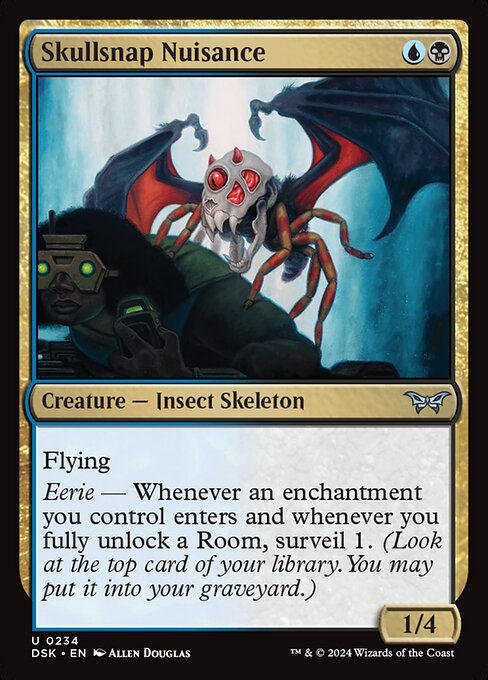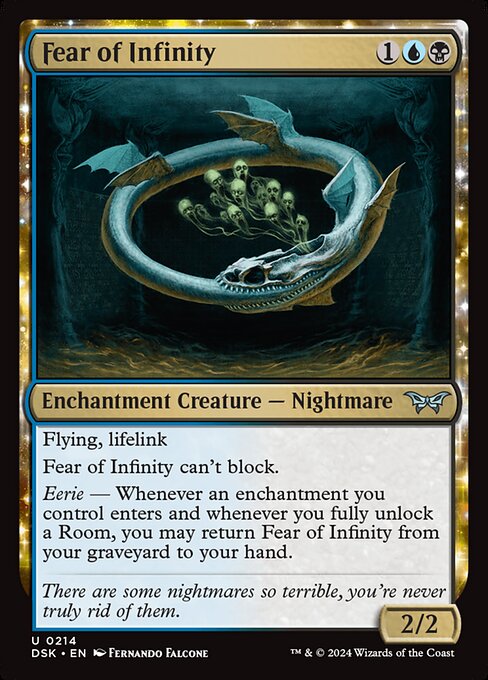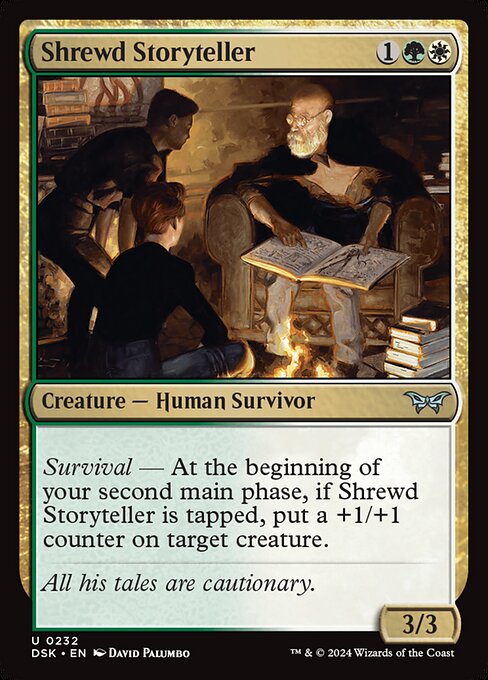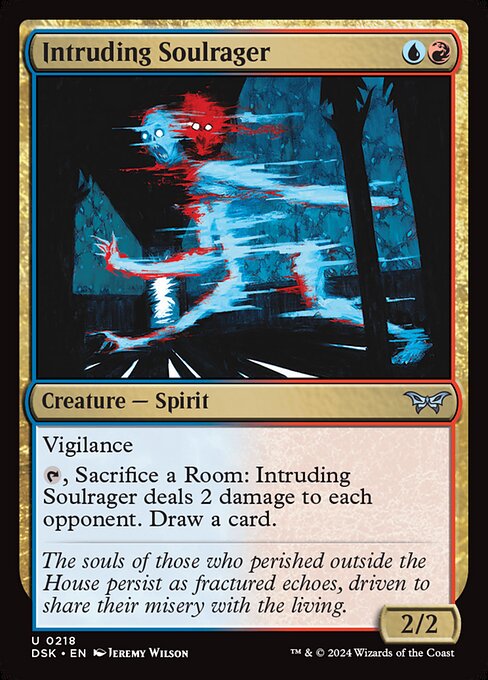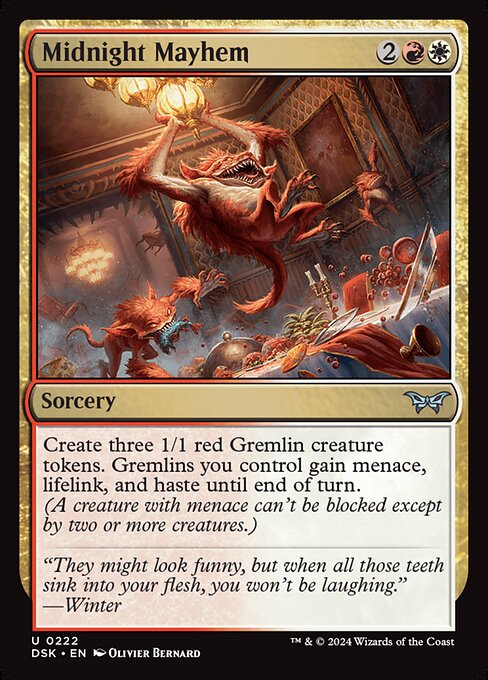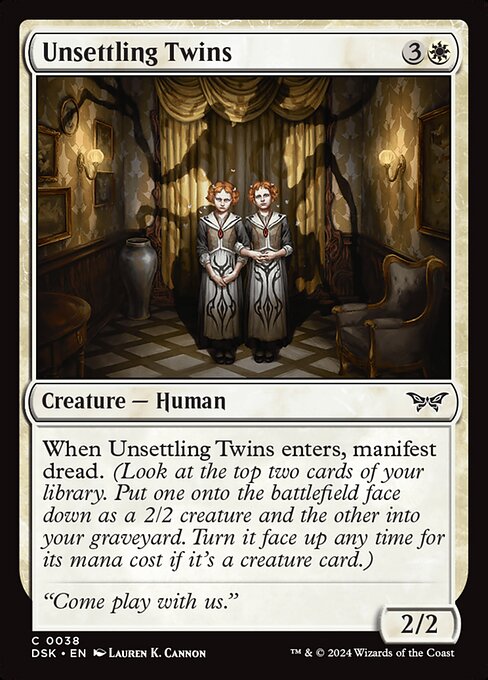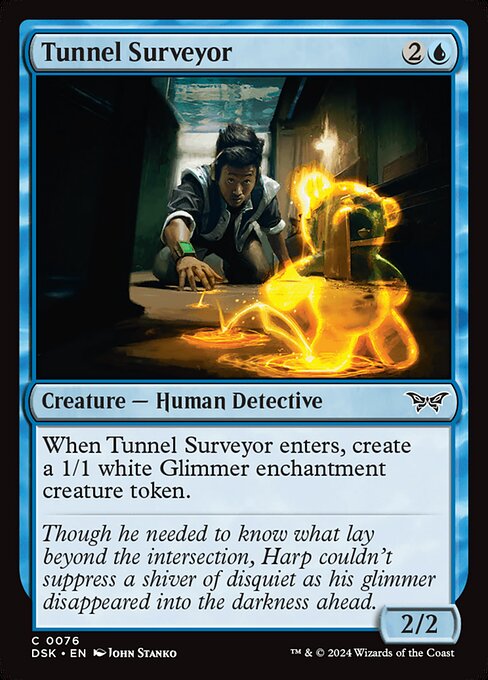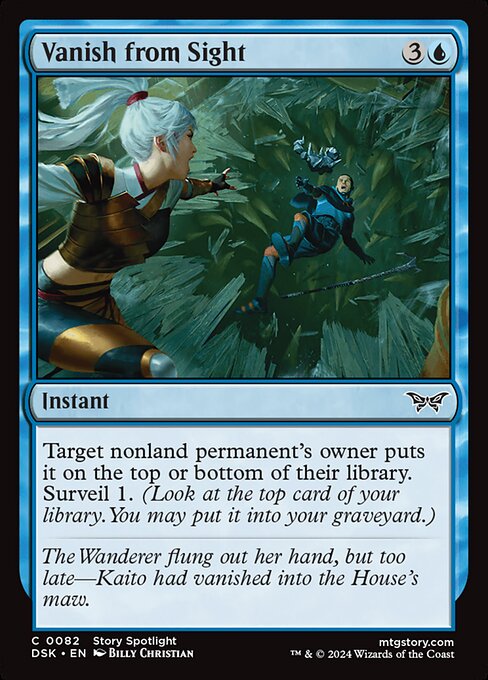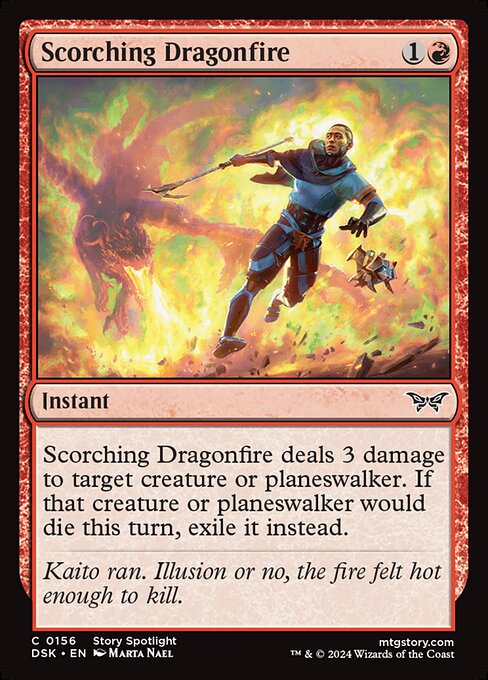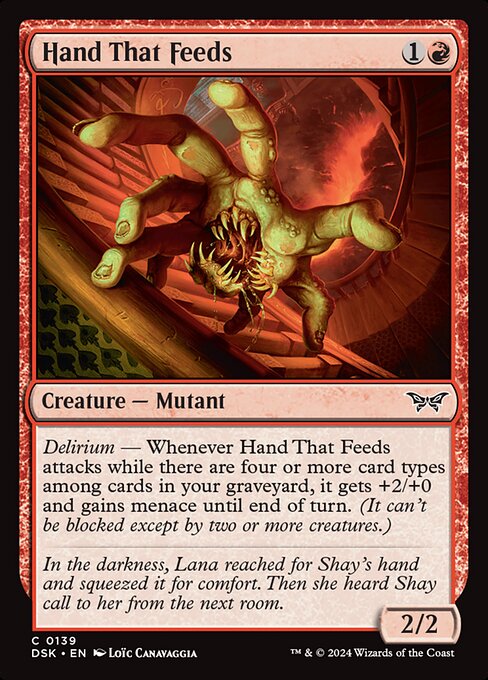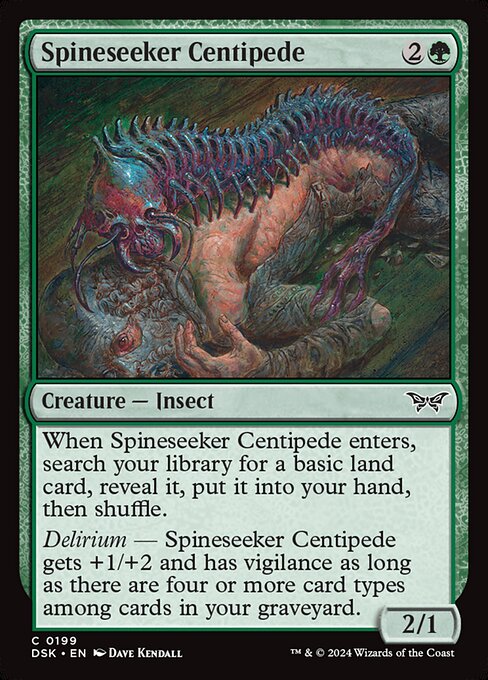Duskmourn: House of Horrors - Draft Archetypes & Limited Guide

Duskmourn: House of Horrors prerelease is in full swing, and players are starting to get a feel for the limited landscape of the set. That said, things are just getting started for the set overall, and there is a lot of Limited left to play. So, even if you've already played prerelease come and make sure that you've got a good understanding of the Duskmourn draft archetypes.
I'll be covering the key mechanics from the set, the 10 draft archetypes, and a few of the best commons to look out for in each color. If you need a refresher on how to draft, check out my article here: How To Draft Better - Five Tips To Improve Your MTG Draft Skills
Key Duskmourn Mechanics
Before we get into the archetypes, let's look at the key Duskmourn mechanics. Having a working knowledge of the keywords will make understanding the draft archetypes easier.
Survival
Survival is an ability on creatures that riggers the given ability if the creature is tapped at the start of your second upkeep.
Rooms
Room cards are a new enchantment sub-type. You may cast either half of a Room card from your hand, but not both. The one you cast "unlocks" and becomes active on the battlefield. As a sorcery, you may pay the mana cost of the other "locked door" to unlock it and have it become active as well.
Manifest Dread
Manifest dread says, "Look at the top two cards of your library. Put one onto the battlefield face down as a 2/2 creature and the other into your graveyard. Turn it face up any time for its mana cost if it’s a creature card." So, this will happen whenever a card instructs you to "manifest dread."
Eerie
Eerie triggers whenever you cast an enchantment or unlock a room.
Delirium
Delirium rewards you for having for or more card types among cards in your graveyard. These types include things like creatures, instants, sorceries, enchantments, artifacts, planeswalkers, and land. Once you have four or more, your delirium will get whatever boost having delirium grants them.
Duskmourn Draft Archetypes
"Eerie" Tempo (White-Blue)
Eerie Tempo focuses on playing a constant stream of enchantments and overwhelms opponents with a board of creatures. "Eerie" triggers whenever you play an enchantment or fully unlock a "room" card. So, you'll want to make sure you have a decent bit of those types of cards in your build.
If you do, cards like Ghostly Dancers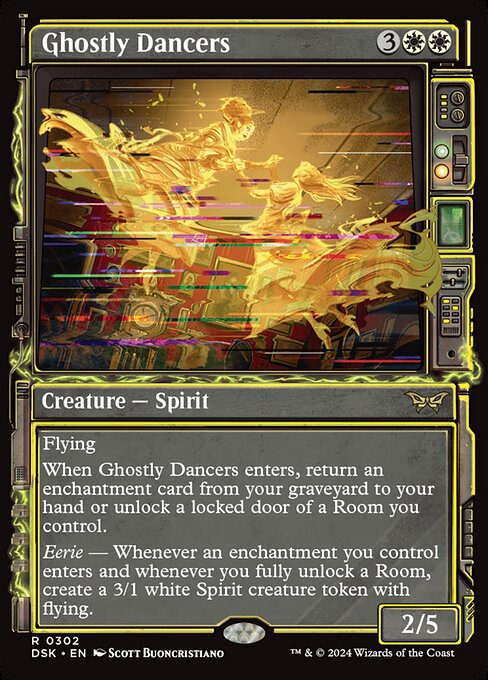 , Entity Tracker
, Entity Tracker![]() , and Unwilling Vessel
, and Unwilling Vessel can be powerful ways to power leverage them.
can be powerful ways to power leverage them.
"Eerie" Control (Blue-Black)
Eerie Control aims to control the game with Room cards like Bottomless Pool // Locker Room and Meat Locker // Drowned Diner
and Meat Locker // Drowned Diner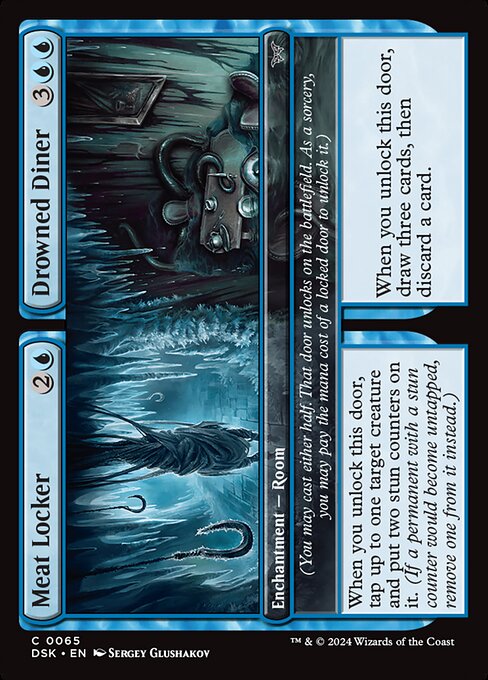 to trigger eerie abilities like Fear of Sleep Paralysis
to trigger eerie abilities like Fear of Sleep Paralysis . These cards, paired with black's removal and blue's control spells, keep the opposing board clear while you land your finishers.
. These cards, paired with black's removal and blue's control spells, keep the opposing board clear while you land your finishers.
Aristocrats/Sacrifice (Black-Red)
As usual, Rakdos has a sacrifice-themed. The archetype can play aggressively by playing Room cards and sacrificing them to drain life and damage opponents. You'll find that with a well-built deck, you can combine this with enchantment and graveyard strategies for maximum efficiency.
Cards like Sawblade Skinripper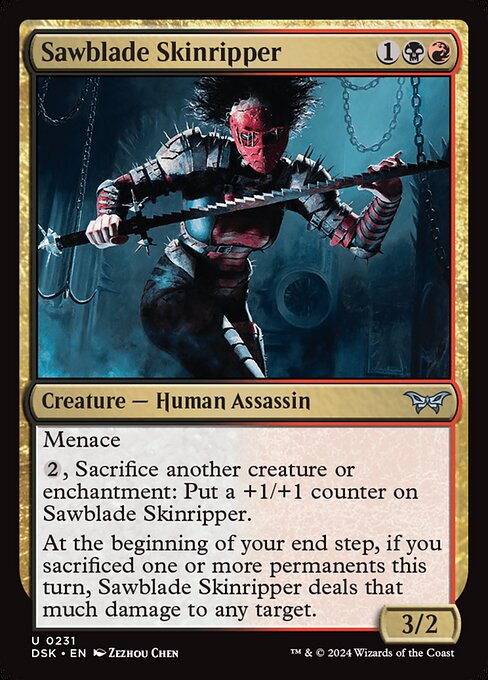 and Diversion Specialist
and Diversion Specialist give you nice repeatable ways to sac your stuff, while things like Popular Egotist
give you nice repeatable ways to sac your stuff, while things like Popular Egotist , Betrayer's Bargain
, Betrayer's Bargain , Boilerbilges Ripper
, Boilerbilges Ripper , and Disturbing Mirth
, and Disturbing Mirth can give you one-time-use effect.
can give you one-time-use effect.
"Delirium" Stompy (Red-Green)
Delirium Stompy wants to be aggressive in the early game while it builds toward delirium to carry it across the finish line in the late game. Wildfire Wickerfolk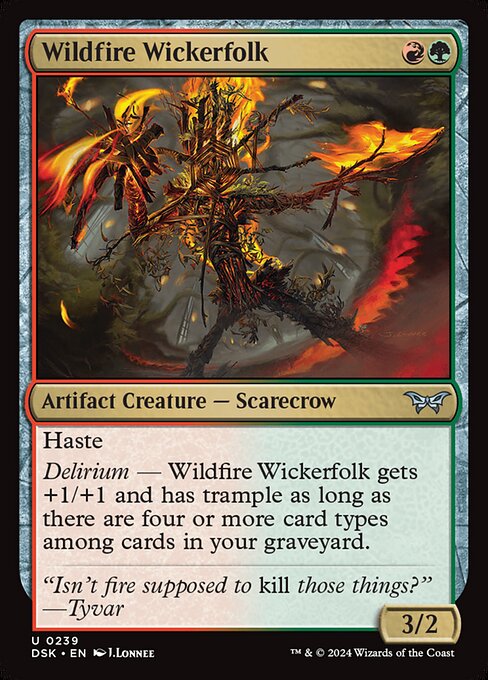 is not only the signpost uncommon for the archetype but it's also very good. A three-mana 3/2 with haste that gets more aggressive once delirium is online.
is not only the signpost uncommon for the archetype but it's also very good. A three-mana 3/2 with haste that gets more aggressive once delirium is online.
And being an artifact and a creature means it contributes quite well to the cause. Aggressive cards with multiple card types, such as Clockwork Percussionist , Omnivorous Flytr, and Fear of Missing Out
, Omnivorous Flytr, and Fear of Missing Out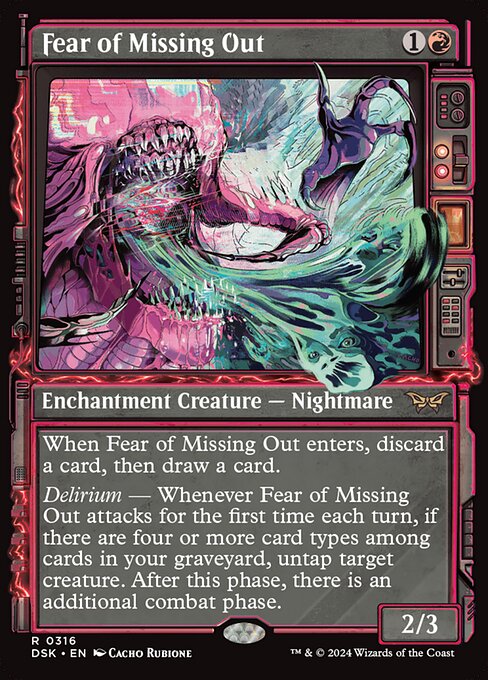 are particularly valuable if you're building Gruul in Duskmourn limited.
are particularly valuable if you're building Gruul in Duskmourn limited.
Survival (Green-White)
Survival employs an aggressive strategy focused on triggering "survival" abilities. This is most easily done by attacking with your creatures. However, there are a handful of cards, like Coordinated Clobbering , Baseball Bat
, Baseball Bat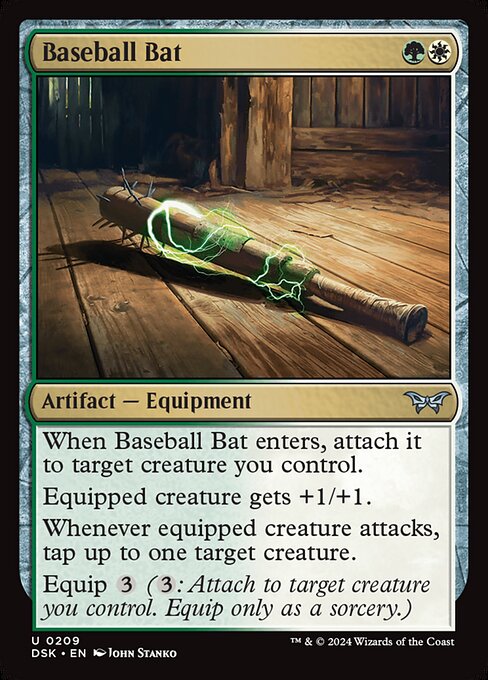 , and Fear of Immobility
, and Fear of Immobility can give you survival triggers even when you can't attack.
can give you survival triggers even when you can't attack.
Reanimator (White-Black)
Orzhov is a reanimator strategy that can stock the graveyard with large creatures via discard (Splitskin Doll and Fanatic of the Harrowing
and Fanatic of the Harrowing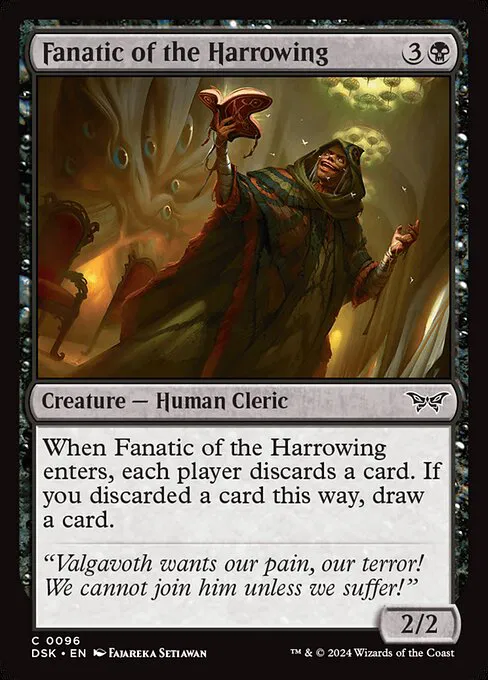 ) or manifest dread (Innocuous Rat
) or manifest dread (Innocuous Rat and Killer's Mask
and Killer's Mask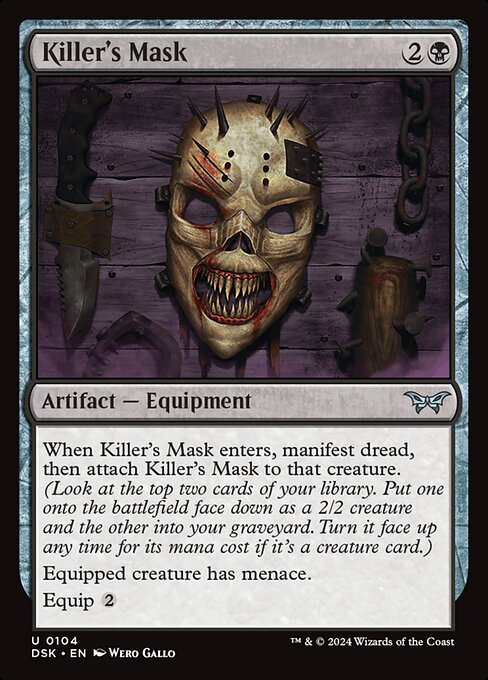 ) effects. Between Vile Mutilator
) effects. Between Vile Mutilator , Shroudstomper
, Shroudstomper , Valgavoth, Terror Eater
, Valgavoth, Terror Eater , and Overlord of the Mistmoors
, and Overlord of the Mistmoors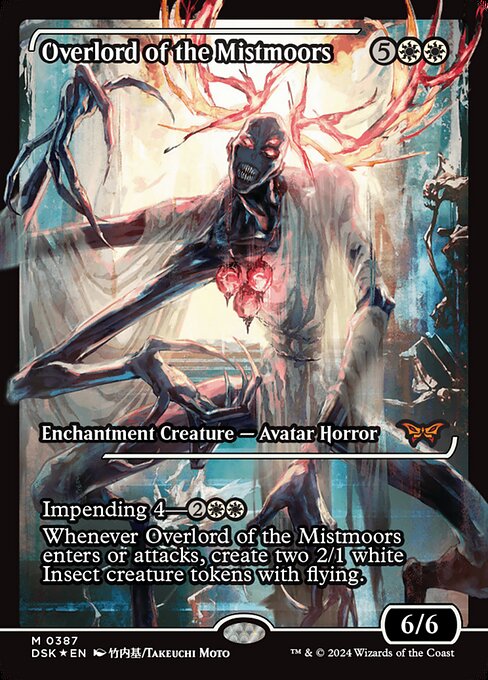 , there is no shortage of bombs to reanimate.
, there is no shortage of bombs to reanimate.
Speaking of reanimating, here are some of the cards to look out for that can actually get your bombs into play: Emerge from the Cocoon , Funeral Room // Awakening Hall
, Funeral Room // Awakening Hall , Live or Die
, Live or Die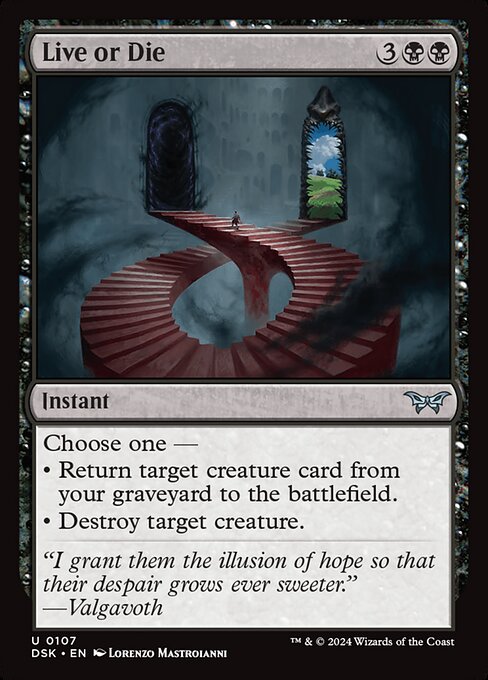 , Valgavoth's Faithful
, Valgavoth's Faithful and Rite of the Moth
and Rite of the Moth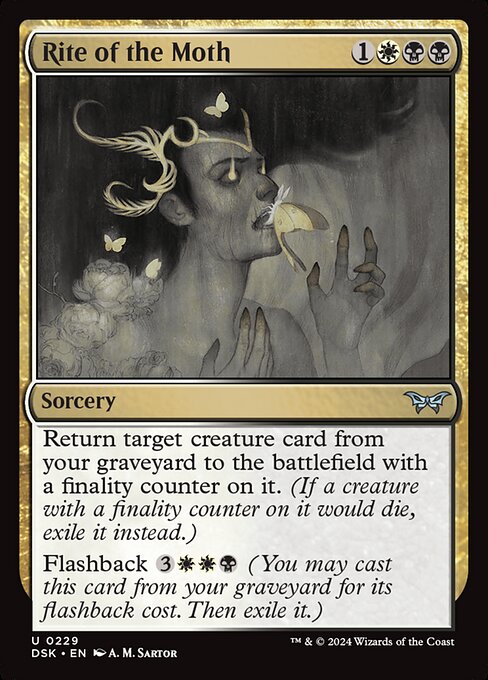 can all get threats into play well ahead of curve.
can all get threats into play well ahead of curve.
Rooms (Blue-Red)
Many decks in Duskmourn make use of Room cards. But Izzet is the Rooms deck. Smoky Lounge // Misty Salon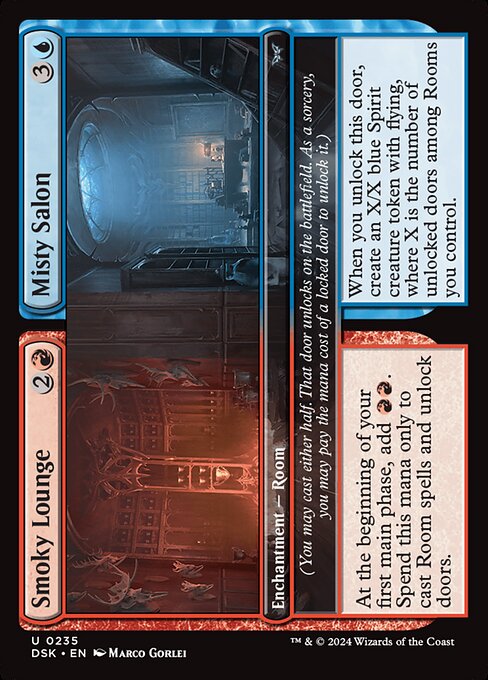 is the main payoff and if you've got enough Room cards in your build, it can be very powerful. There are many Room cards with one side that's cheap to unlock and one that is expensive.
is the main payoff and if you've got enough Room cards in your build, it can be very powerful. There are many Room cards with one side that's cheap to unlock and one that is expensive.
This means the mana Smoky Lounge // Misty Salon can help unlock some powerful Rooms way ahead of schedule. And the other half, Smoky Lounge // Misty Salon
can help unlock some powerful Rooms way ahead of schedule. And the other half, Smoky Lounge // Misty Salon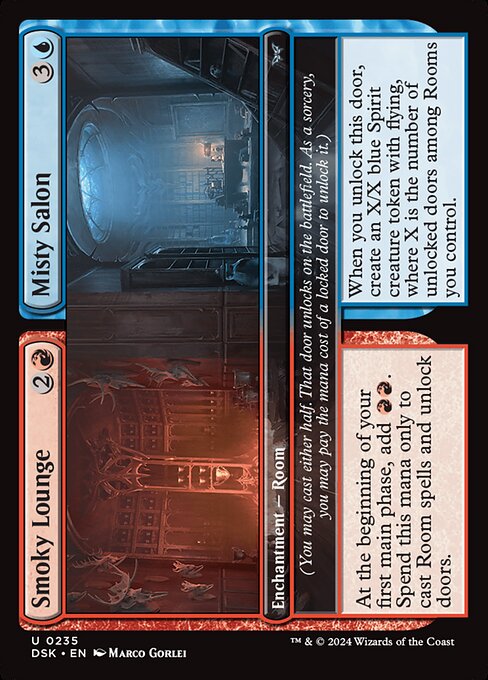 , can pump out some pretty big creatures. Perhaps the best card for this archetype is Ghostly Keybearer
, can pump out some pretty big creatures. Perhaps the best card for this archetype is Ghostly Keybearer , which again, can give you access to your most powerful Rooms early in the game.
, which again, can give you access to your most powerful Rooms early in the game.
Aggro (Red-White)
Boros in Duskmourn limited is kind of just "aggro" but focuses on creatures with a power of two or less. The signpost uncommon here is Arabella, Abandoned Doll . Aside from playing the "power of two or less" payoffs and ways to flood the board with small, efficient creatures, you'll also want to play combat tricks and removal to create favorable attacks.
. Aside from playing the "power of two or less" payoffs and ways to flood the board with small, efficient creatures, you'll also want to play combat tricks and removal to create favorable attacks.
Things like Vengeful Possession , Turn Inside Out
, Turn Inside Out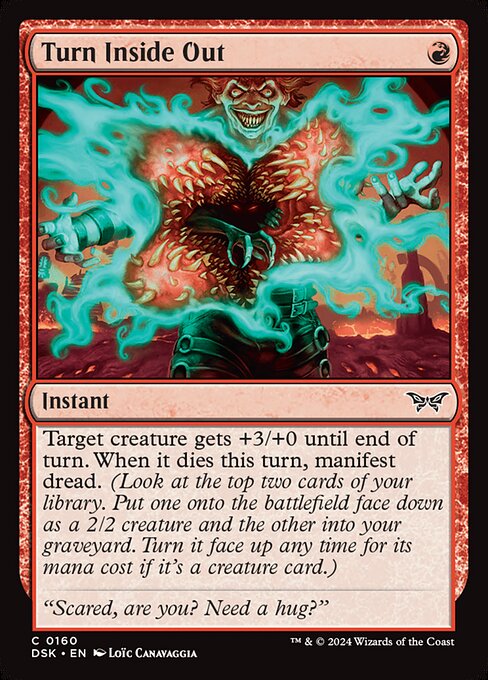 , Jump Scare
, Jump Scare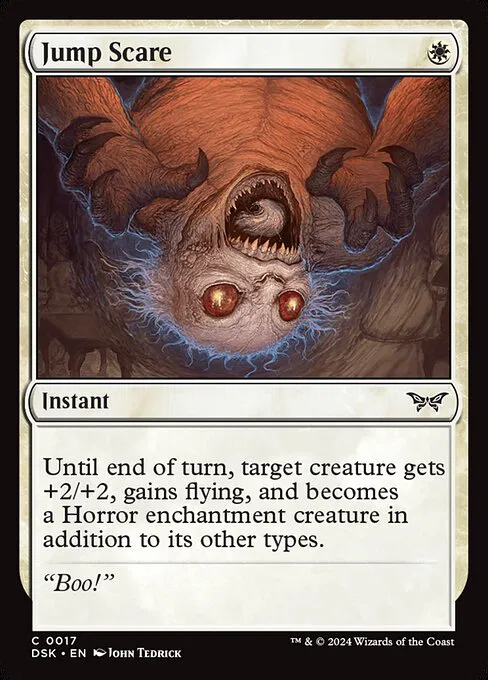 , and Chain Saw go a long way in making sure you can turn your smaller creatures sideways without them dying.
, and Chain Saw go a long way in making sure you can turn your smaller creatures sideways without them dying.
Manifest Dread (Green-Blue)
Manifest Dread focuses on using face-down creatures to surprise opponents and gain advantages. This includes a lot of card advantage like, Oblivious Bookworm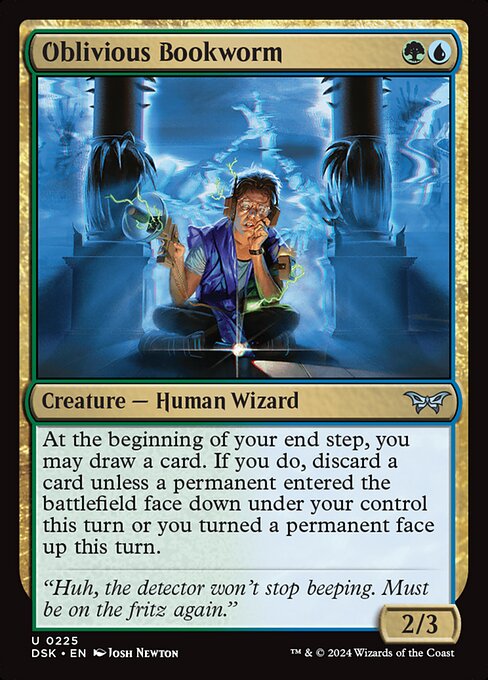 and the very powerful Paranormal Analyst
and the very powerful Paranormal Analyst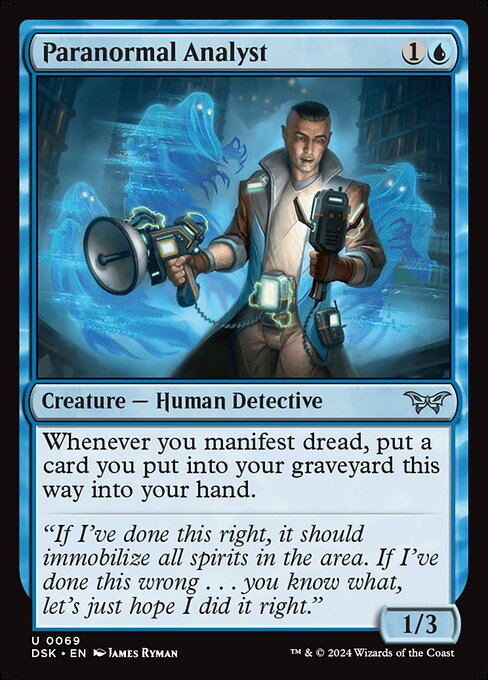 . Playing things face down makes combat hard for opponents, and Growing Dread
. Playing things face down makes combat hard for opponents, and Growing Dread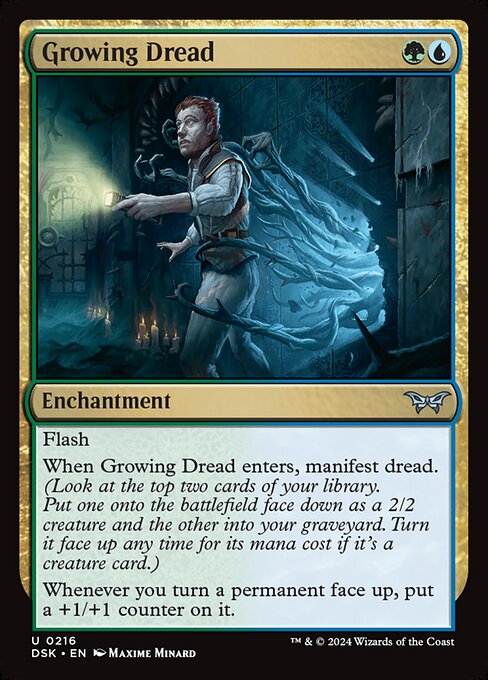 makes them hit even harder.
makes them hit even harder.
Simic is a generally good color combination, and the Manifst Dread deck has access to things like Unnerving Grasp , Threats Around Every Corner
, Threats Around Every Corner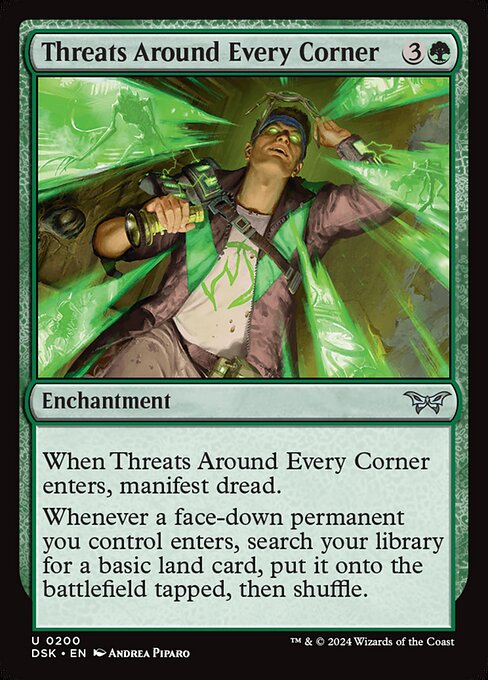 , and Twist Reality
, and Twist Reality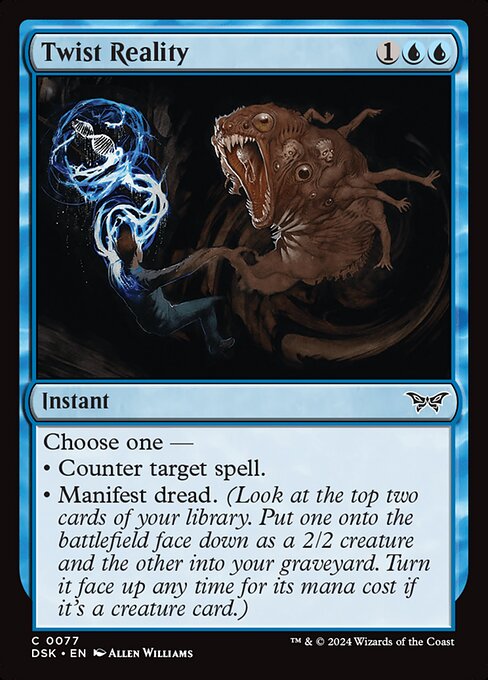 . If you find yourself with strong cards like Hauntwoods Shrieker
. If you find yourself with strong cards like Hauntwoods Shrieker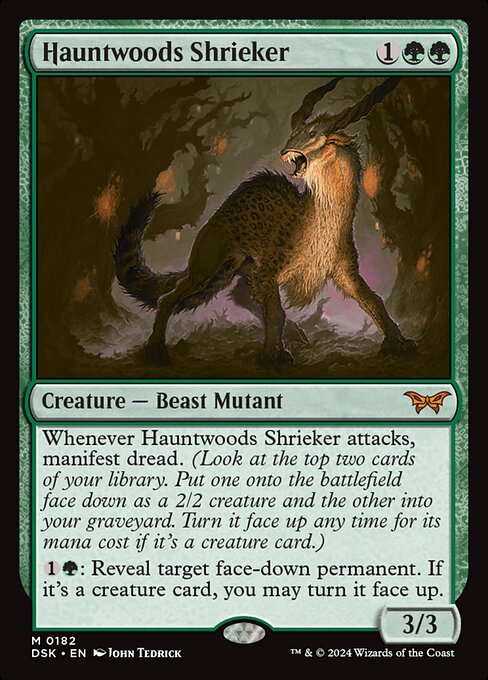 or Valgavoth's Onslaught
or Valgavoth's Onslaught , you can add some nasty finishers to this archetype.
, you can add some nasty finishers to this archetype.
Delirium / Surveil
As usual, Golgari has a graveyard-based archetype. For Duskmourn, it revolves around delirium fueled by the surveil mechanic. To build this deck, you'll want ways to get cards into your graveyard and payoffs for doing it. The Swarmweaver works really well with Broodspinner
works really well with Broodspinner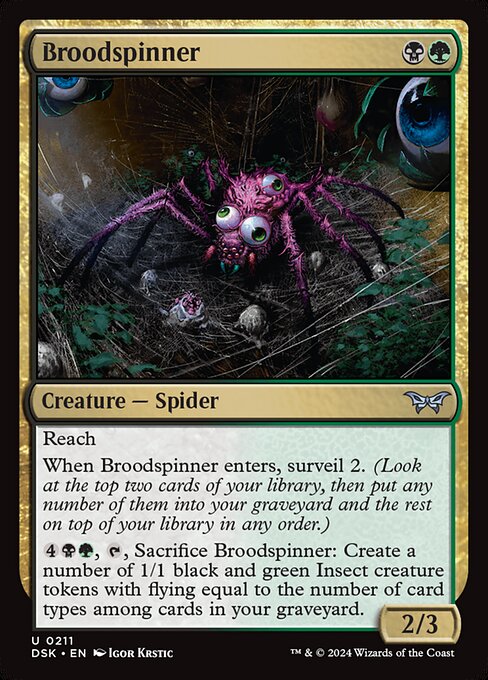 , considering they fuel each other and give your insect tokens some power.
, considering they fuel each other and give your insect tokens some power.
Balustrade Wurm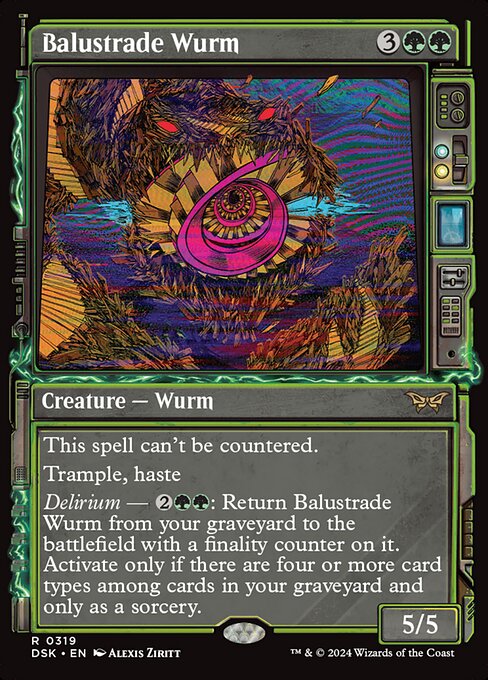 , Omnivorous Flytrap
, Omnivorous Flytrap and strong creatures to look out for, and you'll also have access to good utility/removal in Demonic Counsel
and strong creatures to look out for, and you'll also have access to good utility/removal in Demonic Counsel and Drag to the Roots
and Drag to the Roots .
.
Best Commons In Duskmourn Limited
You're more likely to encounter multiple copies of common cards when playing limited. That said, a good grasp of the strongest commons in Duskmourn is beneficial for ensuring you don't overlook any powerful cards you could have multiple copies of.
White
Seized from Slumber is an instant speed removal spell that can be quite cheap if you have a tapped creature as you cast it. Even if you don't, five-mana, instant speed removal is a pretty good rate for limited.
Trapped in the Screen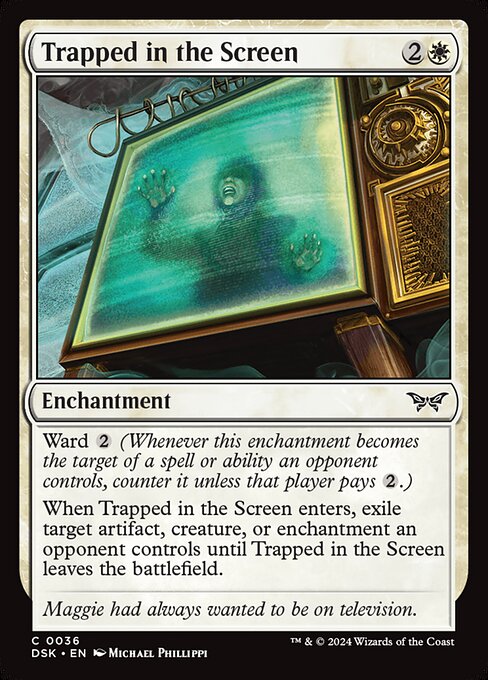 is premium removal at common. It can deal with creatures, enchantments, and artifacts of all sizes. It also has Ward 2, so the potential downside of an opponent removing this is mitigated quite a bit.
is premium removal at common. It can deal with creatures, enchantments, and artifacts of all sizes. It also has Ward 2, so the potential downside of an opponent removing this is mitigated quite a bit.
Even if you're not in a manifest dread build, Unsettling Twins generates some good value at common. You get a total of four power and toughness spread over two bodies. And if you manifest something powerful that you can flip later, you get even more of an upside.
Blue
Tunnel Surveyor is a good value at common because it spreads three power and toughness over two bodies. Cards like this are very solid ways to fill in the gaps in your curve in limited.
Vanish from Sight is a quality, instant-speed removal spell that forces an opponent to redraw whatever you removed. You also get to surveil. Even if you don't have a deck built around using your graveyard, you can always ditch unwanted lands (or anything else you don't want) into the graveyard instead of drawing it.
Unable to Scream is another good removal spell that can neutralize even the biggest threats in Duskmourn limited. If you're playing a slower deck or a control deck, this spell is a great way to get into the late game. It is also an enchantment, so anything that cares about enchantments has even more upside.
Black
Murder is a classic in Limited and with good reason. Three mana, instant speed, clean removal is very efficient for black. The only downside is the double black casting cost. If you're just splashing black for your deck be sure to have enough black sources if you pick up some of a few of these.
The Fanatic might not be amazing in terms of stats, but at four mana, you get quite a solid amount of value. You force your opponent to discard and get a discard yourself, which can fuel any delirium and reanimator strategies. Even if you aren't using your graveyard, you can ditch unwanted cards in hopes of drawing into something better.
Balemark Leech is a card that can do a lot during the course of a game. Even in a stalled board state, you'll be chipping away at your opponent simply by simply playing spells. It doesn't look like a threat either, so it's likely to stay around. And if the other player does use a removal spell on your two drops, you'll probably be ok with that.
Red
Scorching Dragonfire is a strong removal spell for red. Three damage for two mana at instant speed, is a good rate, and the fact that this exiles is very relevant to several archetypes you'll come across.
This is a solid two drop for red decks, in general. And if/when you get delirium online in the late game, you'll get an even bigger, more elusive threat. Anything that can fill the key early gaps in your curve and scale with the game is something to look out for.
I like both sides of this Room card for aggressive red decks. The Glassworks portion is a solid removal spell, even at sorcery speed. At the same time, the Glassworks // Shattered Yard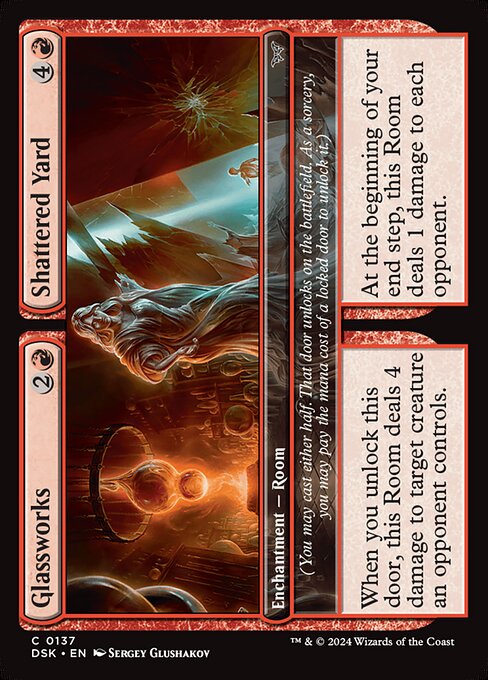 side offers you some inevitability by dealing damage each turn. If you're playing an aggro deck, this will go a long way in getting your opponent from 20 to 0.
side offers you some inevitability by dealing damage each turn. If you're playing an aggro deck, this will go a long way in getting your opponent from 20 to 0.
Green
Spineseeker Centipede may not have the most impressive stats, but it fetches a land to hand, which is important in Limited, especially when splashing colors. It also has the upside of gaining +1/+2 and vigilance later in the game if you can get delirium online. And then, you've got a decent attacker/blocker that has also fixed your mana.
Manifest Dread does a lot more than it looks like it does at face value. Sure, it just says "manifest dread," but that works out to a lot for two mana. First, you'll get to manifest something, getting a 2/2. Then, you're adding a card to your graveyard. And finally, Manifest Dread itself is an easy way to put a sorcery into the graveyard.
So, between the milled card and Manifest Dread itself, you'll have gotten well on your way to delirium enabled. The card isn't flashy, but it does good work in a lot of the Green decks in the format.
This is an interesting take on Green's typical removal style of dealing damage equal to one of your creature's power. What I like about Monstrous Emergence is that you pick the creature as part of the casting cost. That means that even if the creature you pick gets removed, you'll still get the damage, even without the chosen creature onboard.




